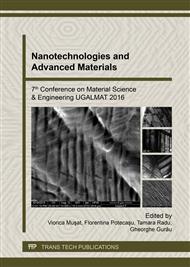p.32
p.38
p.45
p.52
p.58
p.64
p.72
p.79
p.85
Modular Multi-Process Welding System Used for HSLA Materials Joining
Abstract:
The development of welding technologies and techniques used for advanced materials joining should be closely linked with the design and development of equipment and also with the expectations of end-users involved in the cutting-edge manufacturing engineering. In order to reach this objective, the researchers, developers and producers should work together for designing new welding processes, technologies and equipment that meet the requirements of productivity and cost-effective manufacturing processes. Combining the multiple-arc & multi-process welding solutions, the system presented in this paper was designed to perform longitudinal butt and fillet welds of high-strength low-alloy (HSLA) steels plates of medium and large thickness, frequently encountered in shipbuilding, oil and gas onshore and offshore industries. The welding system can be easily used for achieving long seams specific to complex ship blocks or sections, pipelines sections, beams, girders and stringers for railway wagons. Based on the modularity concept, the architecture of this innovative welding system was designed as a structure of multiple interchangeable slides, used for positioning and assembling the welding heads typical for gas metal arc welding, submerged arc welding and Laser welding processes. Due to its versatility, adaptability and functionality, the system allows end-users to select the suitable combination of welding processes, in order to obtain butt and fillet HSLA steels welded joints. By controlling and monitoring the process parameters in real time, significant advantages such as weld geometry, high deposition rate and high penetration and, consequently, improved productivity, controlled cooling rate and, hence, reduced stress and strain are achieved. Due to its modularity and versatility, the system can be successfully used in different industrial applications, in several combinations of GMAW, SAW and LASER-hybrid welding processes, for joining of similar and dissimilar materials.
Info:
Periodical:
Pages:
58-63
Citation:
Online since:
February 2017
Price:
Сopyright:
© 2017 Trans Tech Publications Ltd. All Rights Reserved
Share:
Citation:


